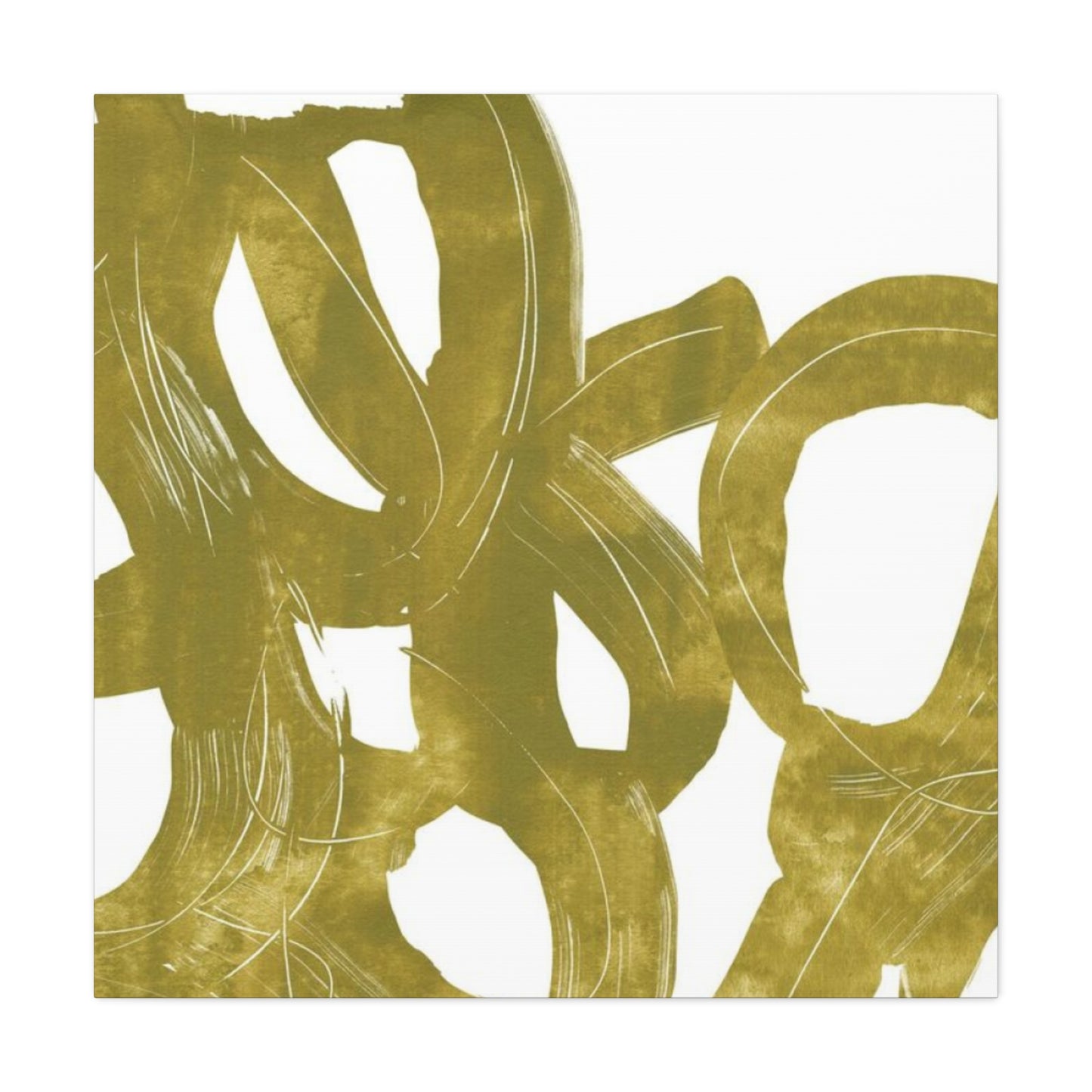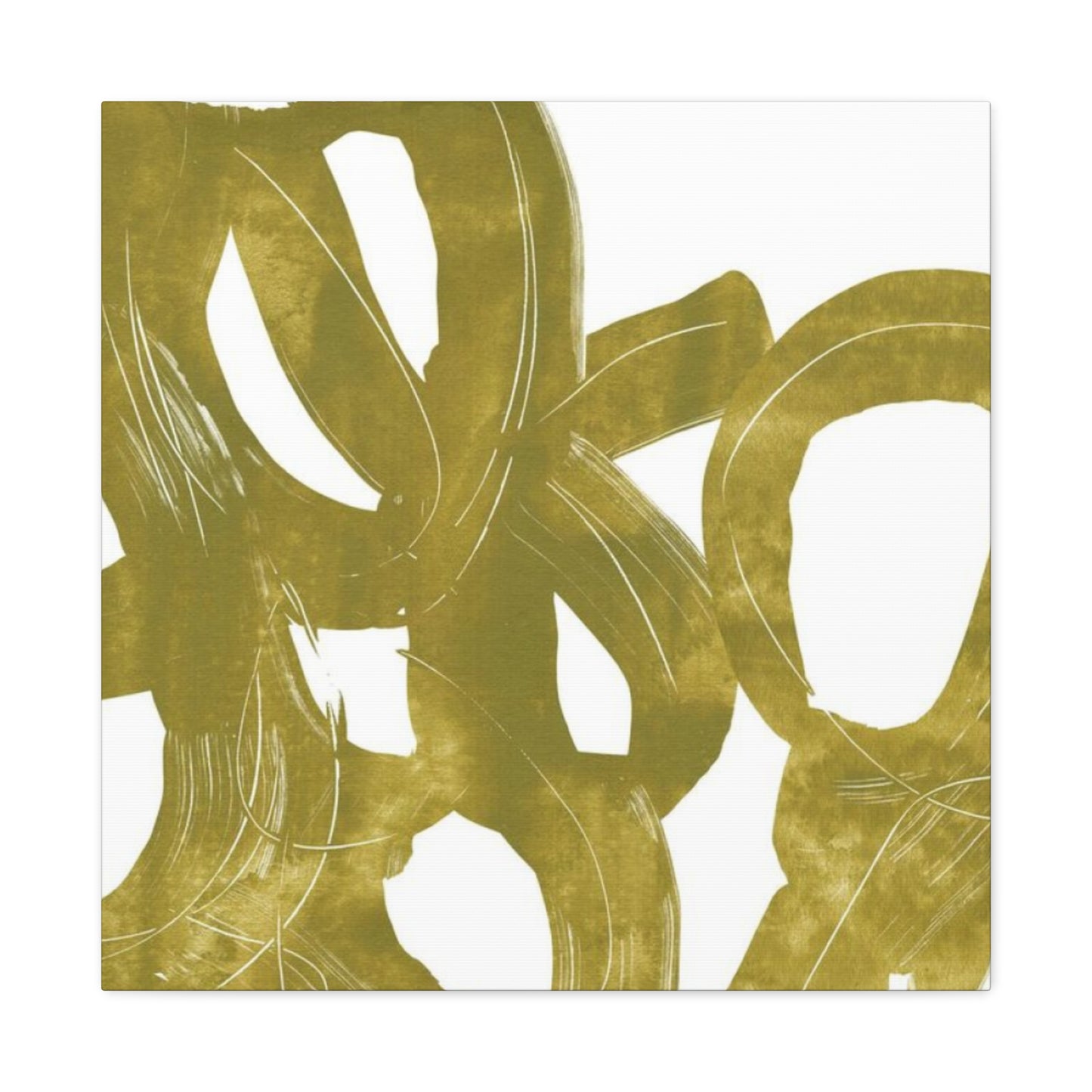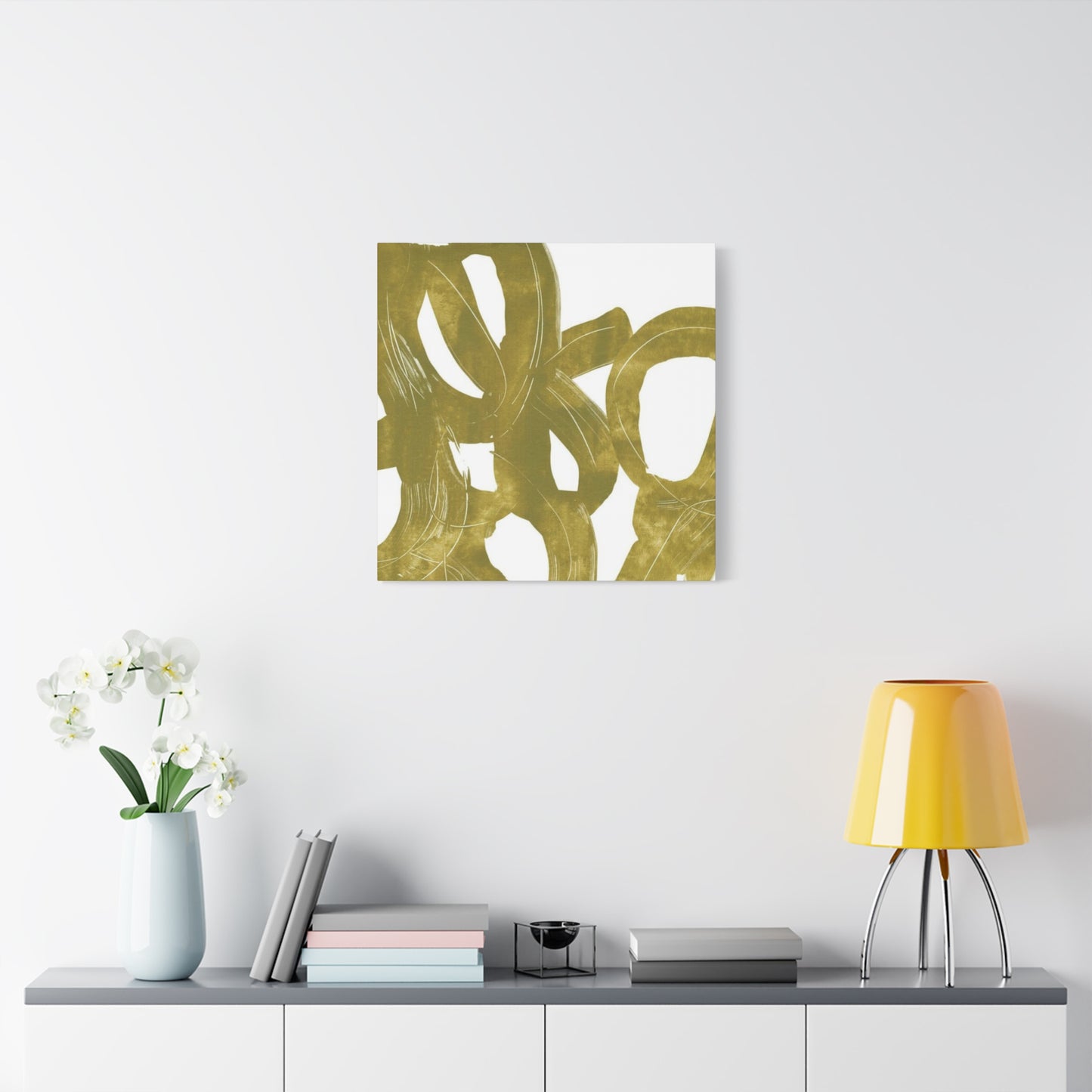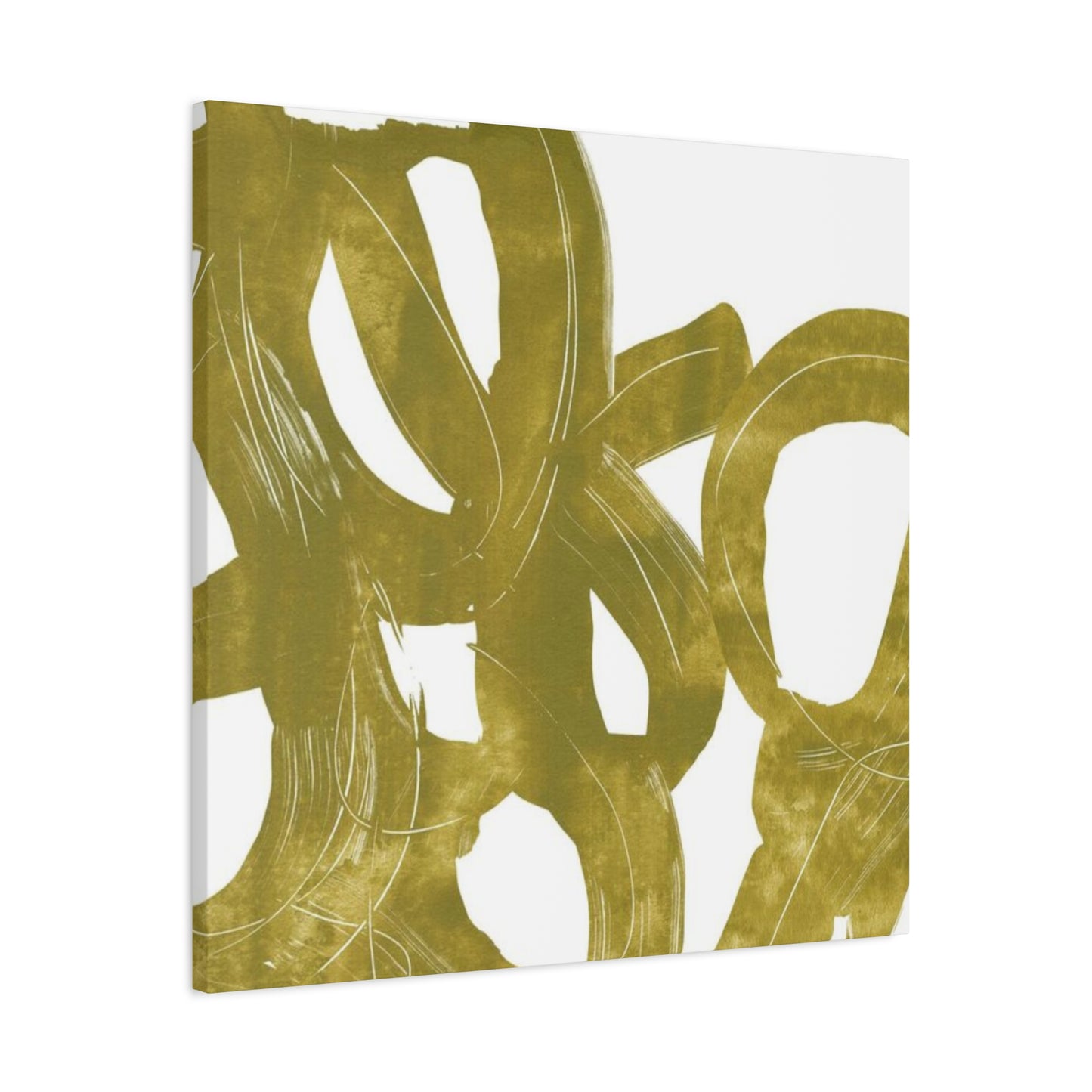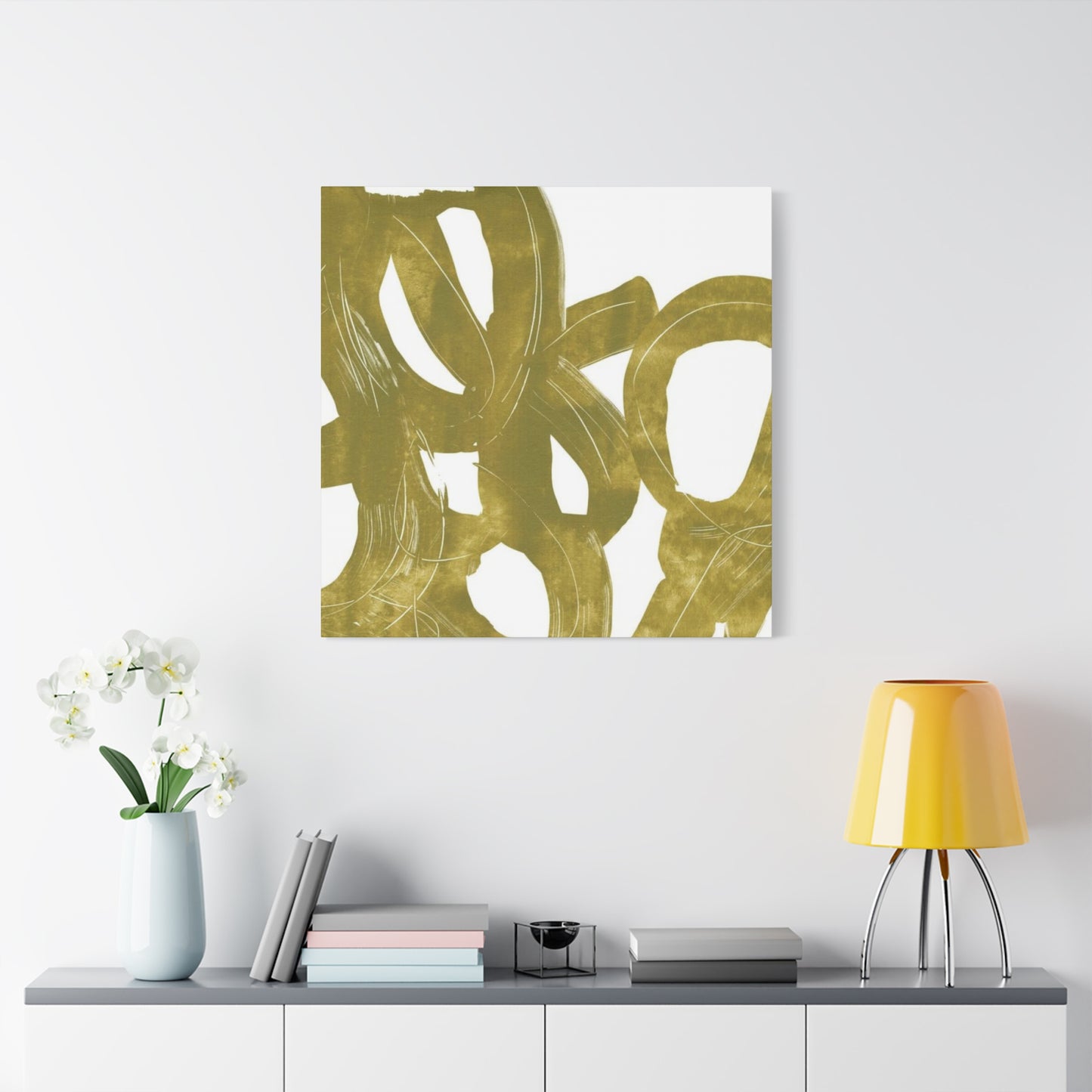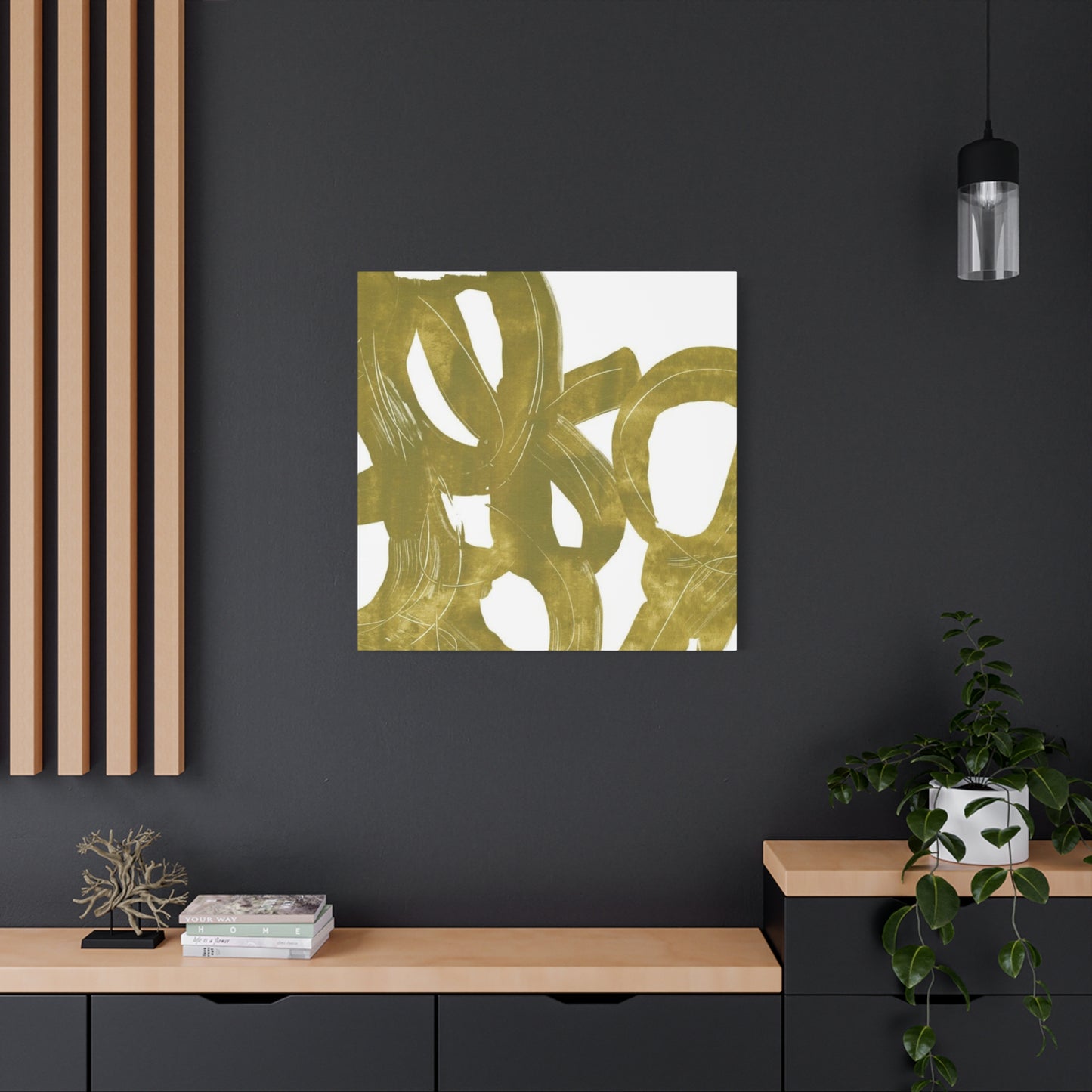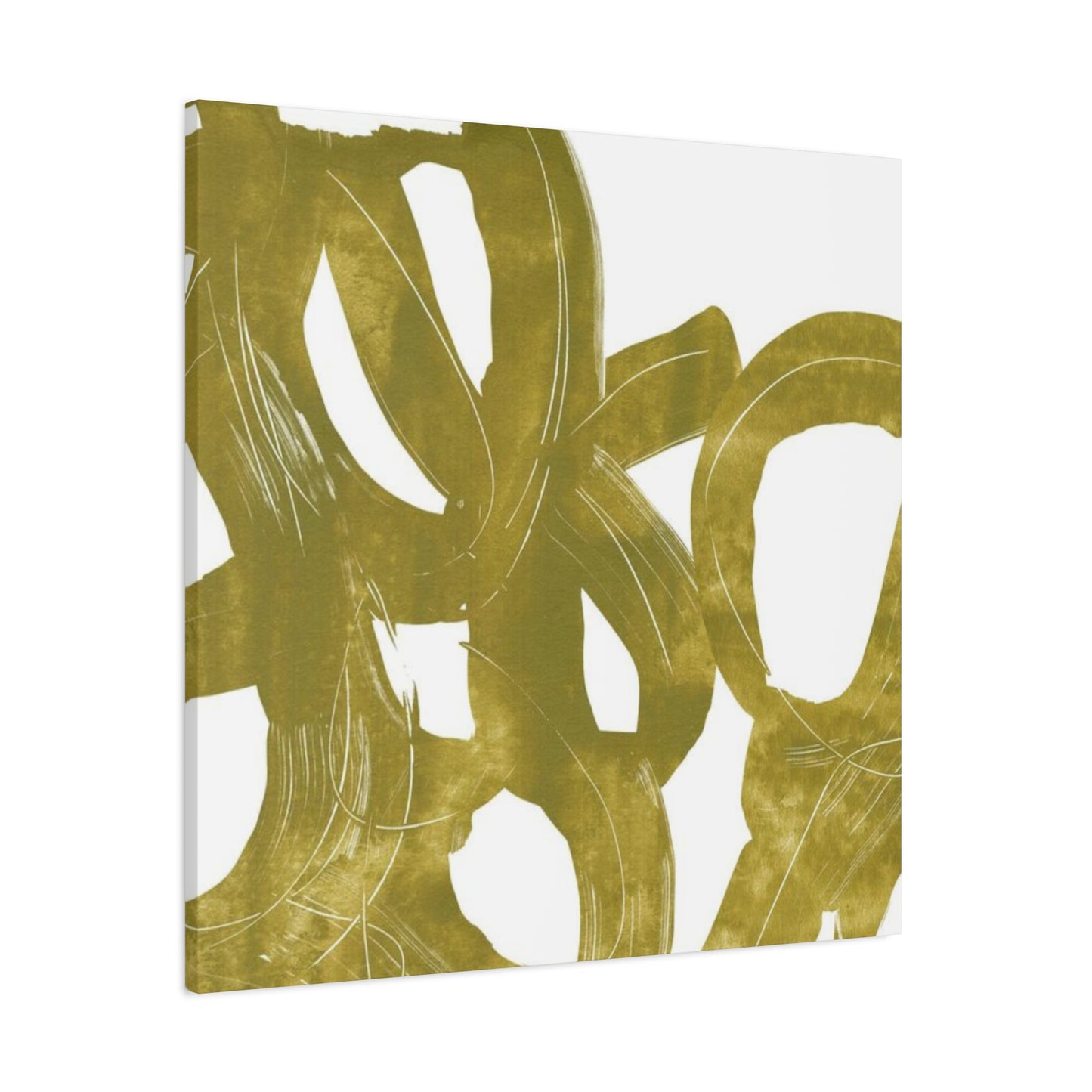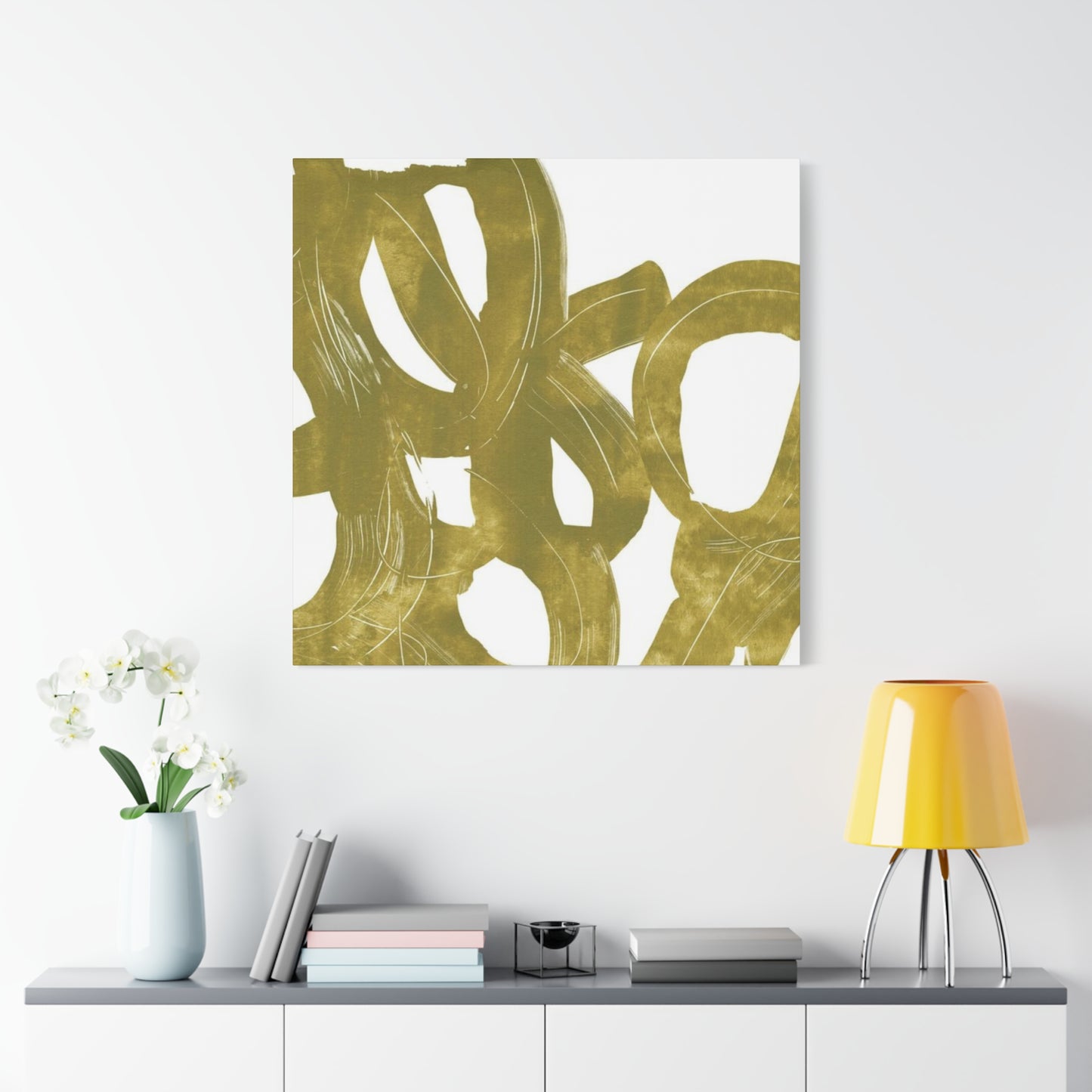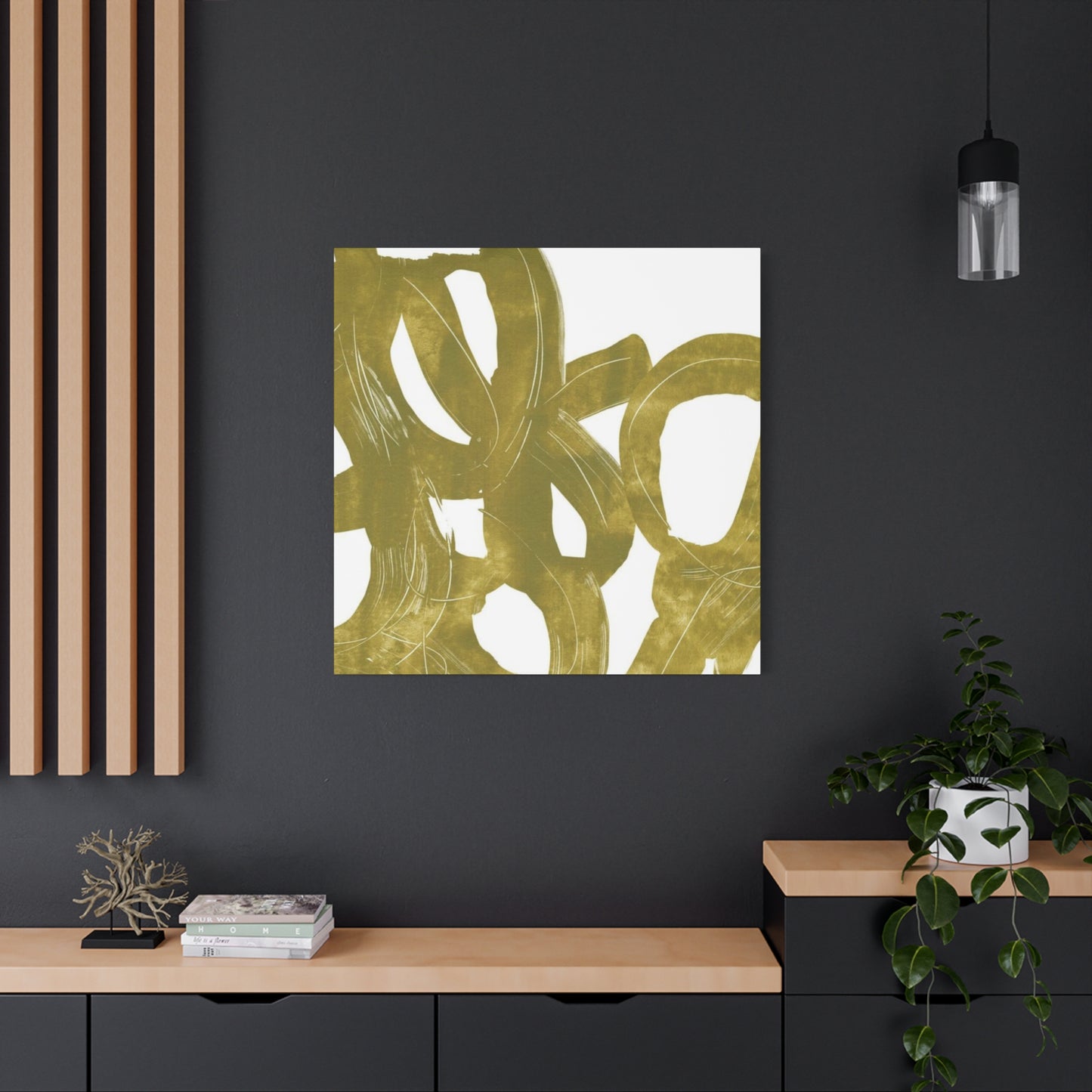Earthy Olive Green Circle Painting: A Refined Statement for Your Wall Art
Green represents nature, tranquility, and renewal, making it one of the most versatile and appealing colors for home decoration. When incorporated into wall art, green creates environments that feel fresh, calming, and connected to the natural world. From botanical illustrations to contemporary abstract pieces, green wall art offers endless possibilities for transforming any room into a serene sanctuary.
The psychology of green reveals why this color works so effectively in our living environments. Green is associated with balance, harmony, and growth, making it naturally soothing to the human eye. Unlike more stimulating colors, green provides visual rest while maintaining interest and energy. This unique quality makes green wall art suitable for every room in the house, from bedrooms where relaxation is paramount to offices where focus and creativity are essential.
Contemporary trends in home decoration increasingly embrace biophilic design principles, which seek to connect inhabitants with nature through various design elements. Green wall art serves as an accessible and impactful way to introduce these natural elements into our homes without requiring significant architectural changes or live plant maintenance. Whether through realistic botanical representations or abstract interpretations of natural forms, green wall art brings the outdoors inside in sophisticated and meaningful ways.
The versatility of green extends beyond its psychological benefits to its practical applications in various decorating schemes. Green complements virtually every other color in the spectrum, from warm earth tones to cool blues and purples. It pairs beautifully with neutrals like white, cream, and gray, while also creating striking contrasts with complementary colors like red and orange. This adaptability makes green wall art an excellent investment for homeowners who enjoy changing their decorating themes periodically.
Modern manufacturing techniques and artistic innovations have expanded the possibilities for green wall art beyond traditional paintings and prints. Today's options include textured pieces that incorporate actual plant materials, three-dimensional sculptures that play with light and shadow, and digital prints that capture the intricate details of botanical subjects with stunning clarity. These diverse options ensure that every homeowner can find green wall art that matches their personal style and budget.
The environmental consciousness that characterizes modern living has also influenced green wall art trends. Many artists and manufacturers now prioritize sustainable materials and eco-friendly production methods, creating pieces that align with environmentally responsible lifestyle choices. This focus on sustainability adds another layer of meaning to green wall art, allowing homeowners to express their environmental values through their decorating choices.
Understanding how to effectively incorporate green wall art into different rooms and decorating styles requires knowledge of color theory, proportion, and design principles. The following comprehensive exploration covers twenty-five distinct approaches to green wall art, each offering unique benefits and applications. These approaches range from traditional botanical prints to innovative contemporary techniques, ensuring that readers will discover multiple options suitable for their specific needs and preferences.
Botanical Illustrations for Natural Wall Displays
Botanical illustrations represent one of the most enduring and beloved forms of green wall art. These scientifically accurate depictions of plants combine artistic beauty with educational value, creating pieces that appeal to both aesthetic and intellectual sensibilities. Traditional botanical illustrations feature detailed renderings of leaves, stems, flowers, and roots, often accompanied by descriptive text that identifies species and highlights distinctive characteristics.
The appeal of botanical illustrations lies in their ability to bring the precision and wonder of scientific observation into domestic environments. These pieces celebrate the intricate beauty of plant life while maintaining a sophisticated, refined appearance that complements both traditional and contemporary decorating schemes. The green elements in botanical illustrations range from subtle sage tones to vibrant emerald hues, depending on the species depicted and the artistic interpretation.
Contemporary botanical illustrations often feature enlarged details of leaves, highlighting the complex patterns of veins, the subtle variations in color, and the organic textures that make each plant unique. These close-up perspectives transform familiar plant elements into abstract compositions that work well in modern decorating schemes while maintaining their connection to nature. The green tones in these pieces can serve as either dominant focal points or supporting elements that enhance other colors in the composition.
Creating gallery walls with botanical illustrations allows homeowners to develop comprehensive natural themes that evolve over time. Starting with a few key pieces, collectors can gradually add illustrations of related species, creating educational displays that tell stories about plant families, geographical regions, or seasonal changes. The consistent green elements throughout these collections provide visual continuity while the varying compositions maintain individual interest.
The printing quality available today allows botanical illustrations to capture details that rival original watercolors and drawings. High-resolution digital reproductions preserve the subtle color gradations and fine line work that make these pieces so appealing, while modern printing techniques ensure longevity and color stability. This accessibility has made botanical illustrations more available to a broader range of homeowners who appreciate their timeless beauty.
Framing choices significantly impact the presentation of botanical illustrations. Traditional approaches favor classic frames in natural wood tones or elegant metals that complement without competing with the artwork. Contemporary installations might use frameless mounting techniques or uniform frame styles that create clean, gallery-like presentations. The key is ensuring that framing choices enhance rather than distract from the botanical subjects.
Scale considerations are important when selecting botanical illustrations for wall displays. Large-scale pieces work well as focal points in living rooms or dining areas, while smaller illustrations are perfect for creating intimate groupings in bedrooms, bathrooms, or hallways. The green elements in these pieces provide color consistency that allows for flexible arrangement options, from symmetrical grids to organic groupings that mirror natural plant communities.
Seasonal rotation of botanical illustrations can keep wall displays fresh and engaging throughout the year. Spring selections might emphasize fresh growth and young leaves, summer pieces could showcase full foliage and flowering plants, autumn choices might highlight changing leaf colors, and winter displays could feature evergreen species or preserved botanical specimens. This approach maximizes the investment in botanical wall art while keeping home environments dynamic and responsive to natural cycles.
The educational value of botanical illustrations makes them particularly appropriate for homes with children or for homeowners interested in gardening and botany. These pieces can spark conversations about plant identification, environmental conservation, and the natural world, making them functional as well as decorative. The green elements in these illustrations naturally draw attention to the characteristics that define different plant species.
Combining botanical illustrations with other green wall art creates layered, sophisticated displays that celebrate nature in multiple ways. Abstract green paintings can provide background continuity, while three-dimensional plant-themed sculptures add textural interest. This approach allows homeowners to develop comprehensive natural themes that incorporate various artistic interpretations of similar subjects.
Abstract Green Artwork for Contemporary Environments
Abstract green artwork offers unlimited creative possibilities for homeowners seeking contemporary wall art that incorporates nature's most versatile color without literal representation. These pieces use green in various forms, from subtle washes of color to bold geometric compositions, creating visual interest through form, texture, and color relationships rather than recognizable subjects. The freedom from representational constraints allows abstract green art to work in any environment while providing the psychological benefits associated with green tones.
The power of abstract green artwork lies in its ability to evoke emotional responses and create atmosphere without depicting specific objects or scenes. Viewers can interpret these pieces personally, finding their own meanings and connections within the color compositions. This interpretive flexibility makes abstract green art particularly suitable for environments where multiple people with different tastes and preferences need to coexist comfortably.
Contemporary abstract green artwork often incorporates multiple shades and tones of green within single compositions, creating depth and visual complexity that rewards extended viewing. These pieces might transition from deep forest greens to pale mint tones, or combine warm yellow-greens with cool blue-greens to create dynamic color relationships. The interplay of different green values creates movement and energy within the composition while maintaining overall color harmony.
Texture plays a crucial role in many abstract green artworks, with artists using various techniques to create surface interest that adds dimensionality to color compositions. Impasto techniques build up paint in thick layers that catch and reflect light differently across the surface. Glazing techniques create transparent layers that allow underlying colors to show through, creating depth and luminosity. These textural elements make abstract green artwork more engaging and dynamic than flat color applications.
The scale of abstract green artwork significantly impacts its effect within room environments. Large-scale pieces can dominate walls and serve as primary focal points, their green tones setting the mood for entire rooms. Medium-scale pieces work well in groupings or as part of larger wall compositions, while small-scale abstract green artworks can provide color accents and visual interest in more intimate settings.
Mixed media approaches in abstract green artwork incorporate various materials and techniques to create unique visual and tactural experiences. These pieces might combine traditional paint with natural materials like sand, leaves, or fabric to create compositions that reference nature while remaining abstract. The green elements in these mixed media pieces can range from subtle background tones to dominant compositional elements.
The emotional impact of abstract green artwork varies depending on the specific shades, compositions, and techniques employed. Soft, muted greens create calming, meditative effects that work well in bedrooms and relaxation areas. Bright, energetic greens stimulate creativity and focus, making them appropriate for offices and studios. Deep, rich greens provide sophisticated, grounding effects that enhance formal living areas and dining rooms.
Lighting considerations are particularly important for abstract green artwork, as different lighting conditions can dramatically alter the appearance and impact of green tones. Natural lighting brings out the true color values and allows for appreciation of subtle color variations throughout the day. Artificial lighting should be carefully selected to complement rather than distort the green tones, with warm white LED options generally providing the most flattering illumination.
Creating collections of abstract green artwork allows homeowners to explore different artistic approaches while maintaining color consistency throughout their homes. These collections might include pieces by different artists working in various styles, or they might focus on a single artist's exploration of green through different techniques and compositions. The unifying green elements provide coherence while the varied approaches maintain individual interest.
The investment potential of abstract green artwork depends on various factors including the artist's reputation, the piece's uniqueness, and current market trends. However, the timeless appeal of green and the flexibility of abstract compositions often make these pieces retain their decorative value even as personal tastes and decorating trends evolve. This longevity makes abstract green artwork a practical choice for homeowners seeking wall art that will remain relevant over time.
Incorporating Living Plants within Wall Art Arrangements
Living plants integrated into wall art arrangements create dynamic, evolving displays that change with growth patterns and seasonal variations. This approach combines the visual impact of traditional wall art with the life and energy of growing plants, creating displays that are never static or predictable. The green elements in these arrangements are literally alive, providing the authentic natural presence that artificial representations can only approximate.
The selection of appropriate plants for wall art arrangements requires consideration of lighting conditions, maintenance requirements, and growth patterns. Epiphytic plants like air plants, bromeliads, and certain ferns work well in wall-mounted arrangements because they don't require soil and can derive moisture and nutrients from the air. Trailing plants like pothos, ivy, and string of hearts create cascading effects that add movement and drama to wall displays.
Mounting systems for living plant wall art must provide adequate support while allowing for proper drainage and air circulation. Modern vertical gardening systems offer various options, from modular pocket systems that hold individual plants to larger frameworks that accommodate multiple plant varieties. These systems must be installed with consideration for wall protection and water management to prevent damage to surrounding surfaces.
The design possibilities for living plant wall art are virtually unlimited, ranging from geometric patterns created with uniform plantings to organic compositions that mirror natural plant communities. Repetitive patterns using identical plants create formal, structured appearances, while mixed plantings offer more naturalistic effects. The green tones in these living arrangements vary with species selection and can be enhanced through careful plant combinations.
Maintenance considerations are crucial for successful living plant wall art installations. Regular watering, pruning, and fertilization keep the displays healthy and attractive, while periodic plant replacement addresses natural aging and seasonal changes. Automated irrigation systems can reduce maintenance requirements for larger installations, while smaller arrangements might rely on manual care routines.
The environmental benefits of living plant wall art extend beyond their decorative value to include air purification, humidity regulation, and psychological well-being. Plants naturally filter indoor air pollutants while releasing oxygen, creating healthier home environments. The presence of living plants has been shown to reduce stress and improve mood, making these installations functional as well as beautiful.
Seasonal variations in living plant wall art create naturally changing displays that reflect natural cycles and maintain year-round interest. Flowering plants can provide periodic color accents, while foliage plants offer consistent green presence with subtle seasonal variations in growth and color intensity. Some installations incorporate plants with distinctive seasonal characteristics to create planned dramatic changes throughout the year.
Combining living plants with traditional wall art creates layered displays that celebrate nature through multiple mediums. Botanical prints or paintings provide permanent backdrops for changing plant displays, while sculptures or decorative elements can add structural interest to living arrangements. These combinations offer the benefits of both permanent and evolving decorative elements.
The cost considerations for living plant wall art include initial installation expenses and ongoing maintenance costs. While the upfront investment might be higher than traditional wall art, living installations provide ongoing value through their environmental benefits and dynamic nature. The long-term costs depend on plant selection, maintenance requirements, and the complexity of the installation system.
Troubleshooting common problems in living plant wall art requires understanding of plant health indicators and environmental factors. Yellowing leaves might indicate overwatering or insufficient light, while stunted growth could suggest nutrient deficiencies or inadequate root space. Regular monitoring and prompt attention to problems help maintain healthy, attractive living wall art displays.
Technology integration in living plant wall art includes automated watering systems, grow lights for low-light locations, and monitoring devices that track soil moisture and environmental conditions. These technological solutions can make living wall art more accessible to busy homeowners while ensuring optimal plant health. Smart systems can even send alerts when attention is needed.
Nature-Focused Green Canvas Artwork
Nature-focused green canvas artwork captures the essence of natural environments through painterly interpretations that emphasize the color relationships and emotional qualities found in outdoor settings. These pieces translate the experience of being in nature into visual compositions that bring those feelings indoors. Unlike literal representations, nature-focused green canvas artwork distills natural experiences into their essential color and compositional elements.
The artistic techniques used in nature-focused green canvas artwork vary widely, from impressionistic brushwork that suggests rather than defines natural forms to more precise rendering that captures specific environmental details. Alla prima painting techniques create spontaneous, energetic effects that convey the immediate experience of natural environments, while layered glazing techniques build up complex color relationships that suggest the depth and complexity found in nature.
Color harmony in nature-focused green canvas artwork often reflects the sophisticated color relationships found in natural environments, where multiple green tones work together to create unified yet varied compositions. These pieces might capture the subtle variations in a forest canopy, the dramatic contrasts between sunlit and shadowed foliage, or the gentle transitions found in meadow grasses. The green elements provide continuity while supporting tones enhance the overall naturalistic effect.
The emotional resonance of nature-focused green canvas artwork connects viewers with their own experiences and memories of natural environments. A painting suggesting a forest path might evoke memories of hiking experiences, while a piece capturing the quality of light filtering through leaves could trigger recollections of peaceful moments spent outdoors. These emotional connections make nature-focused artwork particularly meaningful for homeowners who value their relationships with natural environments.
Scale considerations in nature-focused green canvas artwork affect both the visual impact and the viewer's psychological response to the piece. Large-scale canvases can create immersive experiences that make viewers feel surrounded by natural environments, while smaller pieces provide intimate glimpses of natural details that reward close examination. The green elements in these pieces work differently at different scales, from dominant environmental effects to subtle accent colors.
The painting surface and preparation significantly impact the final appearance of nature-focused green canvas artwork. Smooth, finely prepared canvases allow for detailed rendering and precise color applications, while textured surfaces create more expressive, gestural effects. Some artists use unconventional surface preparations that incorporate natural materials like sand or organic matter to enhance the connection between the artwork and natural environments.
Brushwork and mark-making in nature-focused green canvas artwork can reinforce the connection to natural processes and organic forms. Gestural brushstrokes might echo the movement of wind through grass, while stippling techniques could suggest the texture of foliage or the play of light and shadow. These technical choices help translate the dynamic qualities of natural environments into static visual compositions.
The durability and conservation of nature-focused green canvas artwork require attention to material quality and environmental conditions. High-quality canvas, properly prepared painting grounds, and archival-quality paints ensure longevity and color stability. Appropriate framing and display conditions protect the artwork from environmental damage while maintaining optimal viewing conditions.
Contemporary approaches to nature-focused green canvas artwork often incorporate mixed media elements that enhance the connection to natural environments. Sand, earth pigments, or actual plant materials might be incorporated into the paint to create textural effects that reference natural surfaces. These mixed media approaches blur the boundaries between traditional painting and environmental art.
The market for nature-focused green canvas artwork reflects growing interest in biophilic design and environmental consciousness. Collectors and homeowners increasingly seek artwork that connects them with nature, making these pieces both aesthetically and financially valuable. The enduring appeal of natural themes suggests that these investments will retain their relevance over time.
Installation considerations for nature-focused green canvas artwork include lighting, positioning, and environmental context. Natural lighting enhances the color relationships and allows for appreciation of subtle tonal variations throughout the day. Positioning should consider viewing angles and the relationship between the artwork and surrounding decorative elements to create harmonious overall compositions.
Geometric Green Wall Art Patterns
Geometric green wall art patterns combine the calming, natural associations of green with the precision and order of geometric forms, creating pieces that appeal to both emotional and intellectual sensibilities. These compositions use mathematical relationships and systematic arrangements to organize green elements into visually compelling patterns that work well in contemporary decorating schemes. The contrast between organic color associations and geometric precision creates dynamic tension that keeps these pieces visually engaging.
The design principles underlying geometric green wall art patterns draw from various mathematical concepts including symmetry, proportion, and sequence. Golden ratio relationships create naturally pleasing proportional arrangements, while symmetrical patterns provide balance and order. Sequential arrangements based on numerical relationships like the Fibonacci sequence create patterns that feel both systematic and organic, bridging the gap between mathematical precision and natural growth patterns.
Color progression in geometric green wall art patterns can follow systematic approaches that create smooth transitions or dramatic contrasts depending on the desired effect. Monochromatic progressions using various values of green create subtle, sophisticated effects, while complementary color schemes incorporating greens and their opposites create more dynamic, energetic compositions. Triadic color schemes that include green with two other equally spaced colors offer balanced yet vibrant options.
The scale and repetition in geometric green wall art patterns significantly impact their visual effect and appropriate applications. Large-scale patterns work well as statement pieces that dominate walls, while smaller-scale repetitive patterns can create textural effects that serve as backgrounds for other decorative elements. The rhythm created by repeated geometric elements provides visual continuity that helps organize and unify wall compositions.
Contemporary digital tools have expanded the possibilities for creating precise geometric green wall art patterns. Computer-aided design programs allow for exploration of complex mathematical relationships and systematic color progressions that would be difficult to achieve through traditional methods. These tools enable artists to create patterns with perfect precision while maintaining the ability to introduce controlled variations that prevent mechanical appearance.
The production methods for geometric green wall art patterns range from traditional hand-painting techniques to modern digital printing processes. Screen printing allows for precise reproduction of geometric patterns with consistent color application, while digital printing enables complex color progressions and fine detail resolution. Traditional painting techniques can introduce subtle variations that add handmade character to geometric compositions.
Modular geometric green wall art patterns offer flexibility for homeowners who want to create custom arrangements or change their displays over time. These systems use individual geometric elements that can be arranged in various configurations, allowing for personal expression within systematic frameworks. The green elements in these modular systems provide color continuity while the geometric arrangements offer endless compositional possibilities.
The psychological effects of geometric green wall art patterns combine the calming influences of green with the organizing effects of systematic visual arrangements. These pieces can create sense of order and control while maintaining the natural associations that make green psychologically beneficial. The precision of geometric arrangements can be particularly appealing in environments where focus and concentration are important.
Three-dimensional geometric green wall art patterns add sculptural elements that create changing effects as lighting and viewing angles change throughout the day. These pieces might use layered geometric forms that cast shadows and create depth, or they might incorporate materials that reflect and refract light in systematic patterns. The dimensional aspect adds complexity and interest that keeps viewers engaged over extended periods.
The architectural relationship between geometric green wall art patterns and surrounding built environments creates opportunities for thoughtful integration that enhances both the artwork and the architectural context. Patterns that echo or complement architectural features like window arrangements or structural elements create harmonious relationships, while contrasting patterns can provide dynamic counterpoints that energize architectural compositions.
Lighting design for geometric green wall art patterns requires consideration of how different lighting conditions will affect the perception of pattern relationships and color values. Directed lighting can emphasize dimensional aspects and create dramatic shadow patterns, while ambient lighting provides more even illumination that allows for appreciation of color relationships and overall compositional structure.
Environmentally Conscious Green-Themed Wall Art
Environmentally conscious green-themed wall art reflects growing awareness of environmental issues and the desire to express ecological values through home decoration choices. These pieces often incorporate sustainable materials, eco-friendly production methods, and themes that celebrate environmental stewardship. The green elements in environmentally conscious wall art carry additional meaning beyond their aesthetic value, representing commitment to environmental responsibility and sustainable living practices.
Sustainable material selection in environmentally conscious wall art includes recycled papers, reclaimed wood, natural fibers, and non-toxic paints and inks. Artists working in this area often prioritize locally sourced materials to reduce transportation impacts and support regional economies. Bamboo, hemp, and other rapidly renewable materials provide alternatives to traditional art materials while maintaining quality and durability.
The themes explored in environmentally conscious green-themed wall art often focus on environmental protection, conservation, and the beauty of natural systems. These pieces might depict endangered species, threatened ecosystems, or the effects of climate change, using artistic expression to raise awareness and inspire action. The green elements in these pieces often symbolize growth, renewal, and hope for environmental recovery.
Production methods for environmentally conscious wall art emphasize minimal environmental impact through reduced energy consumption, waste minimization, and responsible disposal of materials. Water-based printing inks, solar-powered studios, and closed-loop production systems demonstrate commitment to environmental responsibility throughout the creative process. These production methods often require additional time and expense but align with the values expressed in the artwork.
The educational component of environmentally conscious green-themed wall art adds value beyond pure decoration, providing opportunities for environmental education and awareness-raising. These pieces might include information about conservation issues, sustainable practices, or environmental science concepts. The combination of visual appeal and educational content makes these pieces particularly appropriate for homes with children or for homeowners interested in environmental activism.
Collaborative approaches in environmentally conscious wall art often involve partnerships between artists and environmental organizations, creating pieces that support conservation efforts through sales proceeds or awareness-raising activities. These collaborations can provide funding for environmental projects while offering collectors meaningful connections to environmental causes. The green themes in these collaborative pieces often directly relate to the environmental issues being addressed.
The market for environmentally conscious green-themed wall art reflects growing consumer interest in sustainable products and environmental responsibility. Collectors increasingly consider the environmental impact of their purchases, making eco-friendly artwork more valuable in both personal and financial terms. This market trend encourages more artists to adopt sustainable practices and environmental themes.
Certification programs for sustainable art materials and practices help consumers identify truly environmentally conscious wall art options. These programs establish standards for material sourcing, production methods, and environmental impact assessment, providing credible verification of environmental claims. The green elements in certified environmentally conscious artwork carry additional credibility and meaning for environmentally aware consumers.
The longevity considerations for environmentally conscious wall art include both physical durability and continued relevance of environmental themes. High-quality sustainable materials ensure that these pieces will remain attractive and intact over time, while the growing importance of environmental issues suggests that environmental themes will remain relevant for future generations.
Display and care practices for environmentally conscious green-themed wall art should align with the environmental values expressed in the pieces. Energy-efficient lighting, minimal packaging, and responsible disposal of replaced pieces demonstrate consistency between values and actions. These practices extend the environmental consciousness beyond the artwork itself to encompass the entire ownership experience.
Integration with broader environmental home practices creates coherent expressions of environmental values that encompass artwork, furnishings, and lifestyle choices. Solar power systems, water conservation measures, and sustainable furnishing choices provide contexts that enhance the meaning and impact of environmentally conscious wall art. The green elements in these comprehensive approaches represent authentic commitment to environmental stewardship.
Tropical Plant-Inspired Wall Art Concepts
Tropical plant-inspired wall art concepts bring the lush, exotic beauty of tropical environments into home settings through artistic interpretations of distinctive tropical foliage, flowers, and natural patterns. These pieces capture the abundance, vibrancy, and unique characteristics that define tropical plant life, from the dramatic size and bold patterns of monstera leaves to the intricate details of tropical flowers and the diverse textures found in tropical forests.
The botanical diversity of tropical environments provides endless inspiration for wall art that celebrates the unique characteristics of tropical plants. Large, architectural leaves like those of banana plants, bird of paradise, and monstera create dramatic focal points with their bold forms and distinctive patterns. The green elements in these tropical interpretations often feature rich, saturated tones that reflect the intense growth conditions found in tropical climates.
Color relationships in tropical plant-inspired wall art often reflect the complex interplay of greens found in tropical environments, where different species create layered canopies with varying light conditions. Deep jungle greens provide background continuity, while lighter green tones suggest new growth and filtered sunlight. These natural color progressions create depth and visual interest that captures the immersive quality of tropical environments.
The cultural associations of tropical plant-inspired wall art evoke feelings of vacation, relaxation, and escape from everyday stresses. These pieces can transform ordinary rooms into exotic retreats that provide psychological benefits through their associations with warm, relaxing tropical destinations. The green elements in tropical wall art often carry these positive associations, making them particularly effective for creating calming, restorative environments.
Artistic techniques for capturing tropical plant characteristics range from precise botanical illustration that documents specific species to impressionistic interpretations that capture the overall feeling and energy of tropical environments. Watercolor techniques work well for suggesting the translucent qualities of tropical leaves and the soft, humid atmosphere of tropical settings, while oils and acrylics can capture the rich, saturated colors that characterize tropical plants.
The scale relationships in tropical plant-inspired wall art often reflect the impressive size of many tropical species. Large-format pieces can create immersive experiences that make viewers feel surrounded by tropical abundance, while detailed studies of tropical plant elements provide intimate glimpses of exotic botanical characteristics. The green elements work effectively at both scales, from dominant environmental effects to intricate botanical details.
Texture representation in tropical plant-inspired wall art captures the diverse surface qualities found in tropical plants, from the glossy, waxy surfaces of many tropical leaves to the rough, fibrous textures of palm fronds and tree bark. These textural elements add visual and tactile interest that enhances the authentic representation of tropical plant characteristics.
Seasonal considerations for tropical plant-inspired wall art recognize that tropical environments don't experience traditional seasons in the same way as temperate regions. However, tropical plants do exhibit growth cycles, flowering periods, and subtle variations that can provide seasonal interest in wall art displays. Rotating pieces or changing arrangements can reflect these natural cycles while maintaining year-round tropical atmosphere.
The integration of tropical plant-inspired wall art with home decorating themes requires consideration of existing color schemes and decorating styles. These pieces work well with natural materials like bamboo, rattan, and natural fibers, while their green elements complement earth tones and neutral color schemes. Contemporary presentations can emphasize the graphic qualities of tropical plants for modern decorating approaches.
Authenticity in tropical plant-inspired wall art involves accurate representation of botanical characteristics and cultural sensitivity regarding tropical regions and their indigenous plant life. Artists working in this area often research specific species and their natural habitats to ensure accurate representation, while also acknowledging the cultural significance of certain plants to indigenous tropical communities.
The market appeal of tropical plant-inspired wall art reflects broader trends toward biophilic design and interest in exotic, natural themes. These pieces offer accessible ways to introduce tropical elements into homes regardless of geographical location or climate, making tropical beauty available to anyone who appreciates the distinctive characteristics of tropical plant life.
Gradient Green Paintings for Wall Enhancement
Gradient green paintings utilize smooth color transitions to create sophisticated wall art that demonstrates the subtle beauty possible within a single color family. These pieces explore the full range of green tones, from pale mint and sage to deep forest and emerald, creating compositions that are both visually striking and inherently harmonious. The gradual transitions between different green values create depth and movement that keeps viewers engaged while maintaining overall color unity.
The technical execution of gradient green paintings requires considerable skill to achieve smooth, imperceptible transitions between different color values. Traditional oil painting techniques allow for extended working time that facilitates smooth blending, while watercolor approaches can create more organic, flowing transitions. Acrylic painting requires specific techniques and mediums to achieve smooth gradients, while digital approaches offer precise control over transition characteristics.
Color theory applications in gradient green paintings explore concepts like value progression, temperature variation, and saturation changes within the green color family. Cool blue-greens might transition to warm yellow-greens, creating dynamic temperature shifts that add visual interest without disrupting color harmony. These sophisticated color relationships demonstrate the complexity possible within seemingly simple monochromatic approaches.
The psychological effects of gradient green paintings combine the inherent calming qualities of green with the meditative effects of smooth, flowing transitions. These pieces can create sense of movement and energy while maintaining overall tranquility, making them suitable for environments where both stimulation and relaxation are desired. The continuous nature of gradients can induce contemplative states that promote mental well-being.
Compositional approaches in gradient green paintings range from simple linear progressions to complex radial and curved arrangements that create more dynamic visual effects. Horizontal gradients might suggest landscape elements like horizon lines or water surfaces, while vertical gradients could evoke tree trunks or architectural elements. Radial gradients create focal points that draw viewer attention while maintaining overall composition unity.
The scale considerations for gradient green paintings affect both the visual impact and the technical requirements for successful execution. Large-scale gradients create immersive environments that can dominate entire walls, while smaller pieces provide subtle color enhancement that complements other decorative elements. The smooth transitions in gradient paintings work effectively at all scales, though large-scale execution requires additional technical expertise.
Lighting interactions with gradient green paintings create dynamic effects that change throughout the day as lighting conditions vary. Natural lighting reveals subtle color variations and enhances the smooth transition qualities, while artificial lighting can be positioned to emphasize specific portions of the gradient or create dramatic shadow effects. These lighting interactions add temporal dimension to gradient paintings.
The framing and presentation of gradient green paintings should complement rather than compete with the subtle color transitions that define these pieces. Simple, unobtrusive frames allow the gradients to be the primary visual focus, while frameless presentations can enhance the sense of continuous color flow. Matting choices should consider how they interact with the gradient edges and overall color harmony.
Contemporary applications of gradient techniques in green wall art often incorporate digital tools that allow for precise control over transition characteristics. These tools enable exploration of complex color relationships and mathematical progression that would be difficult to achieve through traditional methods alone. However, hand-painted gradients offer unique qualities that digital reproduction cannot fully capture.
The versatility of gradient green paintings makes them suitable for various decorating approaches and room functions. Their subtle, non-representational nature works well in contemporary minimalist schemes, while their color richness can enhance more traditional decorating approaches. The meditative qualities make them particularly appropriate for bedrooms, meditation areas, and other environments where tranquility is desired.
Maintenance and conservation of gradient green paintings require attention to color stability and surface protection. High-quality pigments and proper painting techniques ensure that the subtle color relationships remain stable over time, while appropriate display conditions protect the surface from environmental damage. Regular cleaning and maintenance preserve the smooth surface qualities that make gradients effective.
Calm Green Artwork for Peaceful Environments
Calm green artwork specifically designed for peaceful environments emphasizes the most tranquil aspects of green color psychology while employing artistic techniques that promote relaxation and mental well-being. These pieces typically feature soft, muted green tones, gentle compositions, and subtle textures that create soothing visual experiences without overwhelming or stimulating the viewer. The primary goal is to enhance environments where rest, reflection, and restoration are priorities.
The selection of green tones for calm artwork focuses on those values that research has shown to be most conducive to relaxation and stress reduction. Sage greens, soft mint tones, and muted forest colors work more effectively than bright or intense greens for creating peaceful atmospheres. These subdued tones allow viewers to focus on the calming aspects of green without experiencing visual excitement that might interfere with relaxation.
Compositional elements in calm green artwork avoid dramatic contrasts, sharp edges, or busy patterns that might create visual tension. Instead, these pieces employ flowing lines, soft edges, and gradual transitions that guide the eye gently through the composition. The absence of jarring elements allows viewers to engage with the artwork without experiencing stress or overstimulation, supporting the overall goal of environmental calm.
Texture applications in calm green artwork lean toward soft, subtle surface treatments that enhance rather than compete with the peaceful color qualities. Gentle brushwork, soft glazes, and smooth surface treatments create tactile qualities that support visual tranquility. These textural elements should invite closer inspection while maintaining overall visual harmony and avoiding any sense of visual chaos or confusion.
The scale relationships in calm green artwork are carefully considered to provide visual presence without overwhelming viewers or dominating room environments. Medium-scale pieces often work best for bedroom and relaxation environments, providing sufficient visual interest without creating focal points so dramatic that they interfere with rest and relaxation. The proportions should feel balanced and harmonious within their architectural contexts.
Subject matter selection for calm green artwork, when representational elements are included, focuses on peaceful natural scenes, gentle abstract forms, or minimal geometric arrangements that support rather than challenge the viewer's sense of tranquility. Flowing water, soft clouds, gentle landscapes, and organic abstract forms work well, while avoiding subjects that might evoke stress, anxiety, or overstimulation.
The integration of calm green artwork with lighting design requires careful attention to how different lighting conditions affect both color perception and overall room atmosphere. Soft, diffused lighting enhances the peaceful qualities of calm green artwork, while harsh or dramatic lighting can counteract the intended calming effects. Natural lighting filtered through curtains or blinds often provides ideal conditions for viewing calm green artwork.
Placement considerations for calm green artwork in peaceful environments include positioning that allows for comfortable viewing from rest and relaxation positions. Artwork positioned at appropriate heights for viewing from beds, comfortable chairs, or meditation cushions enhances the effectiveness of these pieces for their intended purposes. The relationship between artwork positioning and furniture arrangement should support overall room functionality.
The psychological mechanisms through which calm green artwork promotes peaceful environments involve both color psychology and visual processing principles. Green's association with nature and growth creates positive emotional responses, while the specific tones and compositions used in calm artwork avoid triggering stress responses or overstimulation. The result is artwork that actively supports mental well-being and environmental tranquility.
Maintenance requirements for calm green artwork in peaceful environments should align with the overall goal of maintaining tranquil room atmospheres. Cleaning and care routines should be simple and unobtrusive, avoiding disruption of the peaceful qualities these pieces are intended to support. Protective glazing or framing can reduce maintenance needs while preserving artwork quality over time.
The effectiveness of calm green artwork can be enhanced through coordinated room design that supports peaceful environments through complementary color choices, appropriate furnishing selection, and attention to environmental factors like air quality, temperature control, and acoustic considerations. The artwork serves as one element in comprehensive approaches to creating truly peaceful living environments.
Long-term benefits of calm green artwork in peaceful environments include sustained stress reduction, improved sleep quality, and enhanced overall well-being for room occupants. These benefits justify the thoughtful selection and placement of calm green artwork as investments in long-term health and quality of life rather than merely decorative choices.
Conclusion
The earthy olive green circle painting is a refined and timeless statement piece that brings both calm and sophistication to your wall art collection. With its soothing, natural hues and simple geometric form, this style effortlessly bridges minimalist design with organic warmth, making it an ideal addition to a variety of interior aesthetics—from modern and Scandinavian to bohemian and rustic.
Olive green, reminiscent of nature’s tranquility, evokes feelings of balance, renewal, and grounding. When rendered in a circle—a shape symbolizing unity and wholeness—the artwork becomes a powerful yet understated focal point that invites contemplation and serenity. Its versatility allows it to complement other décor elements while adding depth and subtle color to your space.
Whether displayed as a standalone piece or as part of a curated gallery wall, an earthy olive green circle painting commands attention through its elegant simplicity and thoughtful use of color. It transforms ordinary walls into serene environments, perfect for living rooms, bedrooms, or workspaces where calm and clarity are desired.
Ultimately, this type of wall art is more than just decoration; it’s a refined expression of style and mindfulness. By incorporating an earthy olive green circle painting, you bring a touch of nature’s quiet strength indoors—creating a space that feels balanced, inviting, and beautifully curated.




















